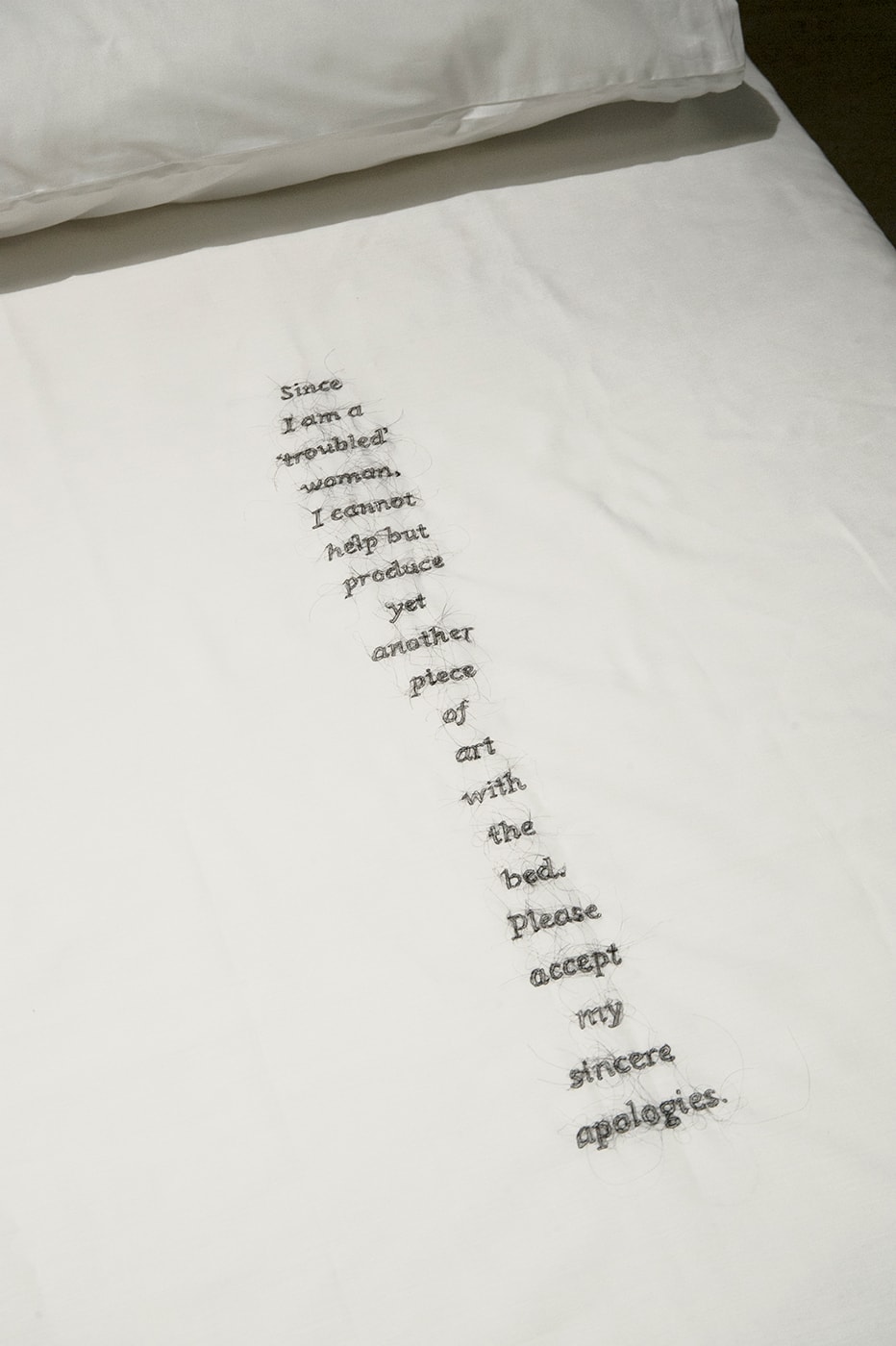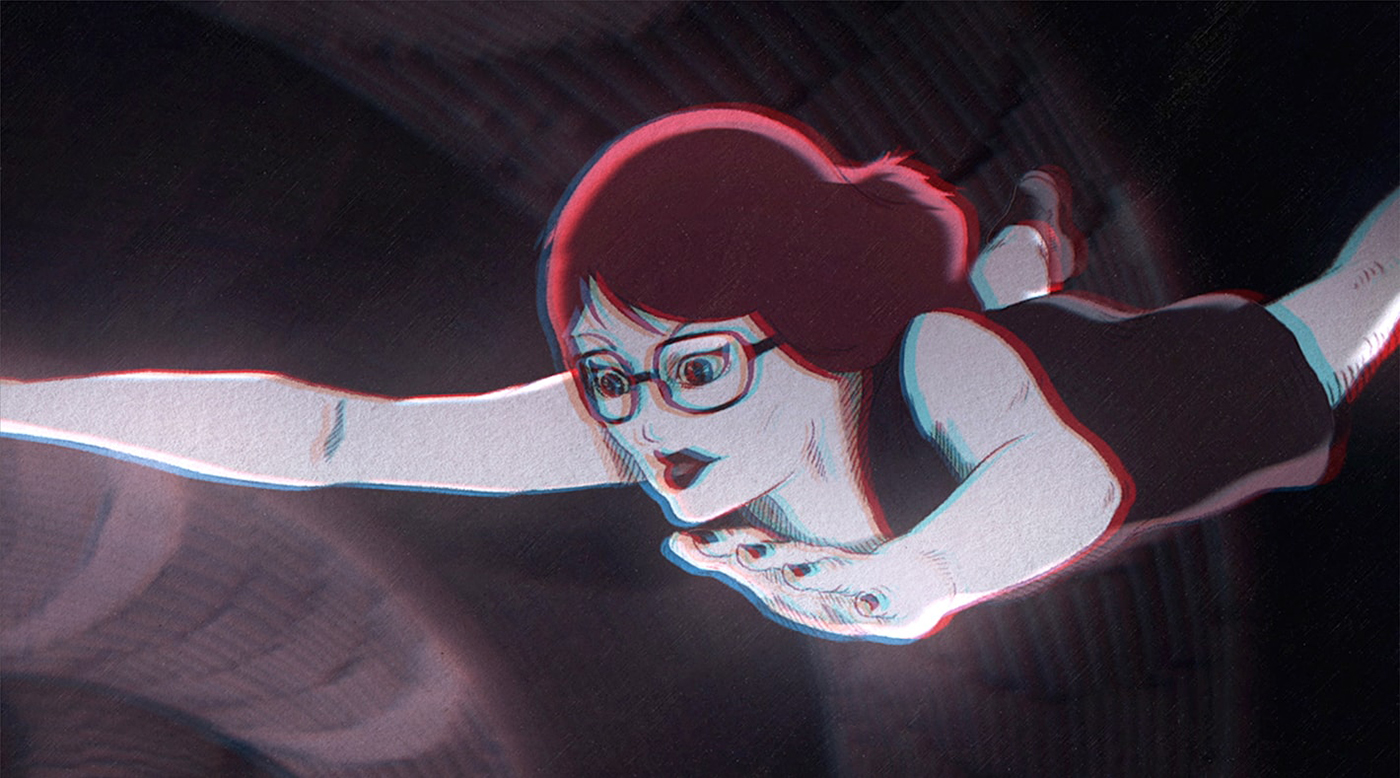Shows
Angela Su’s “The Afterlife of Rosy Leavers”


Rosy Leavers wants to “get to know you better.” We know this because a framed screenshot of a Facebook message sent by her was the first thing that visitors saw in Hong Kong’s Blindspot Gallery. But who was Rosy Leavers? The best guess was that she was deceased. After all, the exhibition mounted in the art space was Angela Su’s “The Afterlife of Rosy Leavers,” in which the artist contemplated reality and sanity, as well as other aspects of psychology.
As a graduate of both science and visual arts, Su mixes the best of both worlds in her artwork. Rorschach Test No. 1, 2 and 3 (all 2016) are ink drawings on drafting film that resemble images used in the psychological test. However, instead of random but symmetrical ink blots, Su created delicate and realistic drawings of human and floral anatomy, still mirrored, and intertwined together as if they are part of the same organism. One could only make sense of these biological and botanical amalgamations via free association. The psychoanalytic theme is also present in other pieces in this exhibition, for example the comic-like Please Tell Me What’s Been Bothering You (2017), which contains excerpts from an actual conversation between a patient and a computer therapist from the 1960s; and My Sincere Apologies (2017), in which hair embroidered on a bedsheet reads: “Since I am a troubled woman, I cannot help but produce yet another piece of art with the bed. Please accept my sincere apologies.”


Symmetry and doubles are also examined elsewhere: A screen shows a video of Su playing a familiar knife game, where one stabs a blade in the spaces between fingers faster and faster, all the while avoiding severing a digit or more. Su’s two hands—symmetrical copies of each other—take turns playing the game in Tack Tack Tack (2017); as her stabs become more frequent, the viewer becomes more anxious. Two inkjet prints flank the video: Split/Snip/Slit (2017) and Twin/Pin/Spin (2017) each takes a group of three similar-sounding words with unrelated meanings, and matches four images that the artist found on the Internet to each word, creating a 12-photo collage. Su wrapped up this section of the exhibition with one video, Rosy Has a Spinning Twin (2017), in which she combines the six words into a nonsensical rhyme, with phrases like “pin her twin,” “split her grin” and “slit her chin.” The artist’s voice is monotonic and arrhythmic; keeping up with her speech made the viewer feel agitated, though there was a hypnotic element in the video, with a mirror effect warping footage of whirling children into a moving Rorschach Test.
Rosy Leavers made an appearance in the exhibition’s namesake piece The Afterlife of Rosy Leavers (2017), in which we find out that she literally separates and uploads her consciousness into cyberspace—hence she is in the “afterlife,” a life after the death of the body. The 14-minute film tells her life story as a schizophrenic woman who questions the significance of knowing whether one is living in “a dream, a hallucination or a simulated reality.” Leavers asks, “Can one guarantee that there isn’t another reality that exists outside this current one?” We know that Leavers held a thought-provoking viewpoint from the video’s narration: “She believed that it doesn’t matter as long as she has a choice, even if everything she does is merely a social construction,” referring to realities defined by interpersonal environments and circumstances, which can shift as time progresses or geographies shift. If we follow Leavers’s interpretation, then what is the ultimate truth—if it exists at all?
“The Afterlife of Rosy Leavers” explored issues regarding consciousness as well as the impact of external agents, such as the mind-bending LSD. Through the exhibition, Su invited us to join her self-reflexive exploration of the mind, prompting us to ponder questions about our sanity and reality—perhaps even meeting Leavers somewhere along the way, so that she could get to know us better.

Angela Su’s “The Afterlife of Rosy Leavers” is on view at Blindspot Gallery, Hong Kong, until June 30, 2017.







